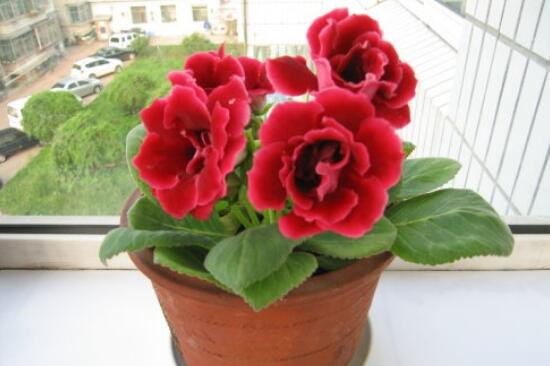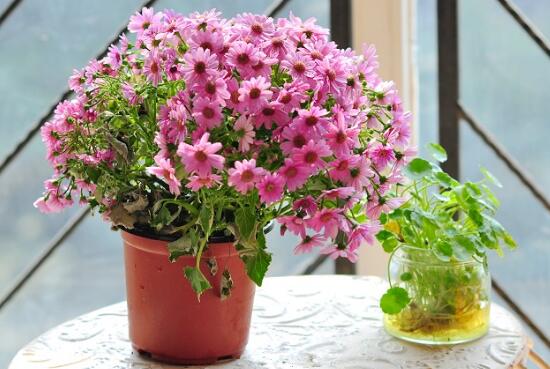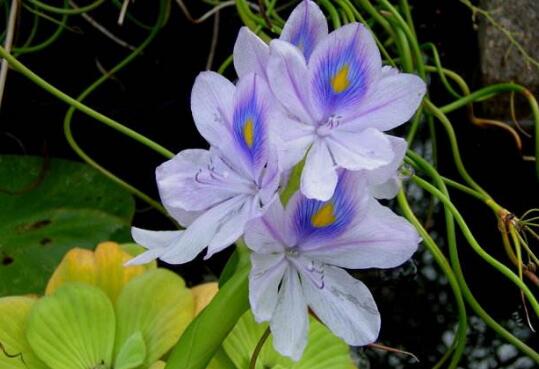How to raise paulownia flowers, the culture methods and matters needing attention of paulownia flowers
The big paulownia flower, a beautiful flower with luxuriant green leaves and colorful flowers, is very ornamental at home. In life, because of the strong efficacy of paulownia flower, many people want to raise it, so how to raise it? The following are the breeding methods and precautions of paulownia flowers carefully arranged by the editor, which are very detailed. Friends who want to raise them must take a look at them.
First, how to raise big paulownia flowers and understand their habits

The big paulownia flower likes the high temperature, humid semi-shady environment, it is not cold-resistant, avoid direct sunlight, when raising indoors, it should be put in the semi-shady place, properly watered, and warm measures should be taken in winter. As for cultivated soil, it is better to be loose, fertile and slightly acidic soil rich in humus. So how to raise the big paulownia flowers? It's very simple, just satisfy its growth habits.
II. Culture methods and matters needing attention of paulownia flower
1. Soil
How to raise the big paulownia flowers, the basin soil should be re-selected first. Nowadays, the potted plants of flower friends are basically purchased online, but the soil is very cheap, and normal maintenance can ensure plant growth, but if you want big paulownia flowers to grow well, it is best to re-choose the soil.
Soil selection: according to the growth habits of paulownia flower, it likes loose and fertile sandy soil rich in humus. In this regard, the editor recommends that we use a mixture of perlite, river sand and 3 parts of rotten leaf soil with a small amount of rotten and sun-dried finely crushed poultry manure.
2. Lighting
The growth of plants is inseparable from light, so light is an indispensable part of the culture method of paulownia flowers. However, the big paulownia flower likes semi-shade and avoids strong light, so it is best to keep it in a semi-shady place indoors.
Note: in summer, flower friends must keep the potted plants in a ventilated place with scattered light; in addition, in the flowering period of paulownia, the shading time should be extended appropriately.
3. Temperature
How to raise big paulownia flowers, timely adjustment of the temperature is also very important. It is understood that the most suitable temperature for the growth of paulownia flowers is 10-25 ℃, we should maintain this temperature, so that the leaves of the plant can grow luxuriantly, green, and the flowers are large and bright.
4. Watering
Water is the source of life, so watering is a very important part in the breeding methods and matters needing attention of paulownia flowers. The big paulownia flower likes the wet environment, should often spray water around the plant when the air is dry, and should be watered 1-2 times a day when it is hot in summer.
Note: there are villi on the leaves of paulownia flowers, once stained with water droplets, it is very perishable, so when watering, do not spray water on the flowers and leaves of the plant, it is best to use the immersion method to water. In addition, watering the paulownia flowers should not be too much, otherwise it will cause symptoms such as yellowing leaves and rotting roots.
5. Fertilization
After watering, let's talk about fertilization, which is indispensable in the growth of paulownia flowers. The big paulownia flower likes fertilizer, and it is best to apply thin cake fertilizer and water every 10 days or so during its growing period. The large paulownia flower needs a large amount of fertilizer from leaf expansion to flowering, so it should be fertilized once a week, preferably with mature thin organic liquid fertilizer.
Note: do not splash on the leaves when applying fertilizer to the flowers of Caulownia. Spray clear water after each fertilization to keep the leaves clean. However, we should also note that the leaves of paulownia flowers should not be stained with water, so clean the leaves are thick, dry the leaves immediately to prevent decay.
6. Diseases and insect pests
In the process of cultivating paulownia flowers, plants will inevitably suffer from diseases and insect pests because of various reasons. Among them, seedling quenching disease is easy to occur in the seedling stage, and inchworm often bites the tender buds during the growth period, and their appearance will affect the growth of paulownia flowers. Therefore, once found, spray control should be carried out immediately, and specific reference can be made to the pest control of paulownia flowers.
How to propagate paulownia flower? the propagation method / bulb cutting of paulownia flower is the most practical.
The efficacy of the big paulownia flower is very good. It not only blossoms beautifully, but also absorbs dust and makes the indoor air more fresh. Such plants are naturally raised at home by many people, but if they are bought and raised, it is better to plant them themselves, and this requires us to master the breeding methods of paulownia flowers. So how do big paulownia flowers reproduce? The following will be introduced in detail by the editor.
First, how to reproduce the big paulownia flower
Generally speaking, there are three methods of propagation of paulownia flowers: dividing balls, sowing and cutting. Among them, the bulb is buried in the soil, and then planted in a new flowerpot; sowing is to sow the seeds in the soil; and cutting is to branch and bud, that is, to insert the branches or buds of the tree into the soil. Let's move on to the specific method of operation.
2. Three propagation methods of paulownia flower (1) how to divide the ball
1. Tuber selection: the bulb propagation of Tripterygium paniculata, it is best to choose the plant of 3-4 years. In winter, paulownia enters a dormant period, when its tubers are dug up and stored in a cool, dry environment.
2. Pot soil selection: according to the habits of paulownia, the tuber culture soil is generally used: 1 perlite, 1 river sand, 3 rotten leaf soil and a small amount of rotten and sun-dried fine broken poultry manure. The bottom of the flowerpot had better be covered with coarse sand or cinder, which is conducive to drainage and ventilation and prevent tubers from rotting.
3. Start to divide the ball: water the tuber appropriately. In spring, when the temperature warms up, it will sprout. When the bud grows to about 5 cm, take out the tuber and cut it into multiple pieces with a knife, each with a bud. Then smear the cut with plant ash and plant it in the basin soil, pour it once after planting, and then water less to keep the basin soil moist.
(2) sowing and propagation of paulownia.
Paulownia can leave seeds after flowering, so the breeding method can be selected by sowing method, and the time can be carried out in spring and autumn. The methods are as follows:
Soak the seeds of paulownia for a day, then prepare to sow the soil, put it in the flowerpot, and then sow the seeds on it. After sowing, wet the flowerpot with water, cover it with glass, put it in an environment of 18-20 ℃, germinate in about 10 days, and blossom after 6 months.
(3) cutting methods of Tripterygium paniculata.
In addition to dividing balls and sowing seeds, cutting is the most common propagation method of paulownia. On the other hand, the cuttage propagation, branch cutting and bud cutting of paulownia are as follows:
1, branch insertion method: take the newly germinated twigs on the big paulownia corm, 2-3 cm, and insert them into the fine sand or soil. After the cuttage is finished, put it in the semi-shade and keep the temperature at 18-20 ℃. It will root in about 15 days.
2. Leaf insertion method: take off the strong leaves of the tree tree, together with its petioles, cut off the leaf's 1 stem 2, and then tilt it into the matrix. Keep the soil moist after cutting, then cover it with glass, put it in the semi-shade, keep room temperature 25 ℃ and high humidity, and root will grow well about 20 days after cutting.
Generally speaking, the breeding method of paulownia flower is very simple, and its breeding method is not difficult, whether it is ball division, sowing or cutting, it can survive. However, the method is dead, people are alive, we can according to the actual situation, choose the method to reproduce. With regard to the breeding method of Yulu, the editor has introduced this, hoping to bring help to everyone.
The culture method of paulownia and the propagation method of paulownia flower
Paulownia flowers are perennial grasses with a plant height of about 15-25 cm. The tuber is oblate and the aboveground stem is very short. Leaves opposite, thick and large in shape, ovoid, serrated. Pedicels grow between the leaves. Rich in colors, there are pink, red, purple-blue, white, complex color and so on, the flowers are very beautiful. The flowering period is from March to June, and the paulownia flower is very beautiful, which is very suitable for indoor culture. The following introduces the breeding and breeding methods of paulownia flower.
Culture method matrix of paulownia flower
The mixed matrix of rotten leaf soil, coarse sand and vermiculite can be used.
Temperature
The growth temperature of paulownia is about 18-25 degrees, and the temperature should not be lower than 8 degrees after dormancy in winter.
Sunshine
Semi-positive plants, like semi-shady environment, to avoid strong light in the direct sun, summer must be placed in the place through the wind.
Watering
Paulownia does not like floods during the growing period, so it is necessary to avoid Rain Water intrusion, but the air humidity should be high.
Fertilizer application
Paulownia likes fertilizer and usually applies thin organic liquid fertilizer every 10-15 days during the growing period. There is usually no fertilization in winter.
Propagation method of paulownia flower 1. Sowing of paulownia
Sowing: pure peat, peat perlite or three in one, but the type of peat soil had better be fine, and the matrix should be moist before growing true leaves. Wet the soil fully, and then sow the seeds as big as dust evenly, there is no need to cover the soil! One centimeter under the plant can be soaked in the bottom plate and sucked on the water to make the culture medium moist until four true leaves grow. Cover with a transparent lid and wait for it to germinate where the scattered light is sufficient. B, transplant seedlings: generally, the seedlings have to be moved twice before they grow fast. at present, I don't understand why. Four true leaves move once, and then the single piece is only longer than 10CM once better, so it grows very fast. C, planting: the base fertilizer can be properly placed when planting to help the full capacity of the flowering period.
2. Leaf bud insertion, leaf insertion (1) strong leaves are better as reproductive leaves, too old, poor vigor, too tender and immature, petiole 2-3CM, the method is similar to that of Corydalis, the leaves are lightly compacted with wet holes, and the larger leaves can be divided into two. (2) after the leaves are inserted and properly moisturized, they will sprout for about one and a half months. If the leaves are not rotten and do not germinate for more than two months, the leaves can be knocked off, leaving only a short petiole on the soil surface to control water and let the soil dry slightly, which may speed up the germination. (3) the seedlings can be transferred and planted after sprouting to four true leaves, and the seedlings can be cultured in places with sufficient light after slowing down the seedlings. B. Bud insertion can be used as a reproductive form to remove the excess lateral buds or terminal buds of paulownia, so that the growth rate and survival rate is better than that of leaves, and the top bud should be knocked off to reduce nutrient consumption. Don't rush to look at the flowers. The flowers are sure to come and be more full and gorgeous. 3. Bulb culture
A, the beheading of paulownia is just the opposite of pansy, leaving it behind. It is best to find a sunny day after the flowers have completely bloomed, leaving the stalk 1-2 cm. 3 or 5 days after beheading, there is no need to water the ball, so as to avoid wound infection leading to rotten ball. It will sprout again within 10 days after beheading. When sprouting to four true leaves, you can change the soil and transplant or the original pot to continue planting. Try not to change the pot and change the soil as soon as possible, so it is easy to rot the ball.
B, after beheading, the bulbs usually have multiple buds, if not for reproduction, only one of the buds can be left, and the weak buds can be removed, which is conducive to the concentration of nutrients and the blooming of more and more flowers.
- Prev

How to water melon leaf chrysanthemum, watered once a few days / twice a day in summer / morning and evening
For melon and leaf chrysanthemum, flower friends should be no stranger, it is a kind of Compositae, with beautiful flowers and rich colors. In daily maintenance, melon leaf chrysanthemum is not difficult to manage, but in the simplest watering, many flower friends are prone to mistakes, then how to water melon leaf chrysanthemum home? Melon leaf chrysanthemum is watered for a few days
- Next

How to raise Phoenix blue, how to cultivate Phoenix blue and matters needing attention / environmental ventilation
Phoenix blue is a kind of flower plant native to Brazil, which was introduced to China, and now it can be seen in many parts of our country. However, if you want to raise it well, there are many things you need to pay attention to. How to raise Phoenix Eye Blue? What are the culture methods and matters needing attention of Phoenix eye blue?
Related
- Fuxing push coffee new agricultural production and marketing class: lack of small-scale processing plants
- Jujube rice field leisure farm deep ploughing Yilan for five years to create a space for organic food and play
- Nongyu Farm-A trial of organic papaya for brave women with advanced technology
- Four points for attention in the prevention and control of diseases and insect pests of edible fungi
- How to add nutrient solution to Edible Fungi
- Is there any good way to control edible fungus mites?
- Open Inoculation Technology of Edible Fungi
- Is there any clever way to use fertilizer for edible fungus in winter?
- What agents are used to kill the pathogens of edible fungi in the mushroom shed?
- Rapid drying of Edible Fungi

